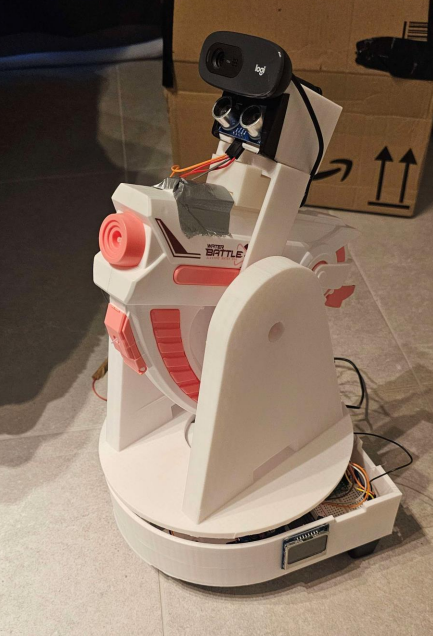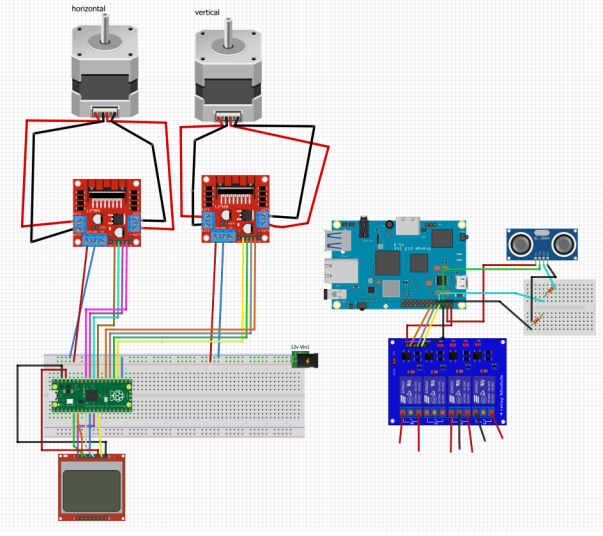This IoT project involved building a reactive security system that combines hardware and software to detect human presence and respond with automated defenses. Using computer vision, the system tracks a person's head and aims a motorized watergun, firing when a target is detected. If someone moves too close, a secondary defense—a fog machine—triggers to obscure visibility. The project emphasized real-time interaction between AI, mechanics, and embedded control.
 Orange Pi
Orange Pi
 OpenCV
OpenCV
 3D Printing
3D Printing
I contributed primarily to the software side, particularly helping with the Python code, with valuable support from teammates. Working with the physical components was a learning curve for me, but I also assisted with some of the Orange Pi configuration and connections. Despite the technical challenges, I made an effort to stay involved, ask for help when needed, and contribute as effectively as possible.
We started by testing head detection using OpenCV and a pre-trained model to ensure reliability. After achieving stable detection, we synchronized the output with stepper motors to control turret rotation. Custom 3D-printed mounts were used to hold the hardware components securely. For the smoke screen, we used a relay-controlled fog machine triggered via GPIO based on proximity input, iterating on logic and timing until it functioned smoothly.

A key challenge was achieving real-time synchronization between detection and mechanical movement without stutter or overcorrection. We addressed this with cooldown timers and motion smoothing techniques. Performance limitations on the Orange Pi also forced us to simplify our detection model to maintain acceptable processing speeds. These constraints shaped our development choices but ultimately led to a well-functioning system.

The final build successfully detects people, automatically tracks their position, and responds with an aimed water spray. If someone enters the close-proximity zone, a fog screen is deployed to obscure vision. The project was praised for its originality and the successful integration of AI, robotics, and embedded systems in a playful context.
This project pushed me to improve my soft skills, especially in team collaboration and communication. I learned to ask for help, adapt to technical challenges, and contribute even when outside my comfort zone. It also showed me how much more there is to explore in AI and hardware integration, and sparked my interest in continuing to learn in this field.